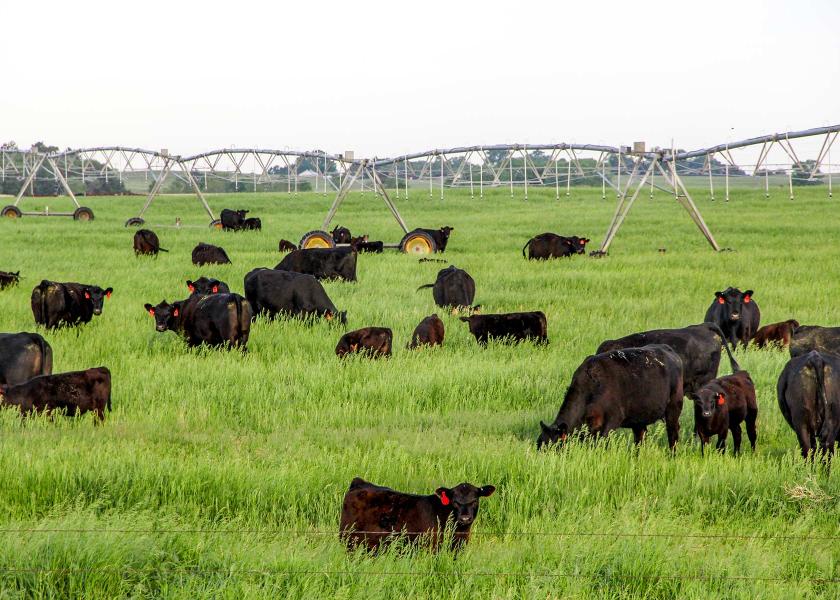Sexten: Subtractive Solutions

When you consider improvement do you consider yourself a positive or negative person? Not in the sense of your attitude or optimism but in how you approach the solution. Do you tend to look for additive or subtractive answers?
Let's put the question in a more familiar context. If someone asked you how to improve the performance of a set of steers headed to pasture what would you suggest? What comes to mind first, deworming or implanting? Another option is supplemental feeding or a managed grazing system.
For the cow-calf operator the same question, how would you recommend improving reproductive performance of a cowherd? Would you increase supplement level or deworm the cows? Alternatively, would you consider implementing estrus synchronization or early wean the calves?
A recent paper in Nature by Gabrielle Adams and coworkers at the University of Virginia, evaluated how we tend to approach problems. They hypothesized that most people favor additive solutions compared to subtractive. Don’t confuse these approaches as positive and negative, rather solving problems by adding parts or processes rather than removing extra parts and complexity.
The research team tested this problem-solving theory using several tasks. When given a bridge with one side longer than the other, participants were asked if they would add a block to the short side or remove one from the longer side. Another group was given a mini-golf hole design and asked how to improve the hole, some added features like windmills while others removed sand traps. In both tests the subjects favored the additive solutions, making improvements by adding to the system rather than subtracting parts and features.
When participants were given an unstable platform they could add three blocks to improve stability or remove just one to accomplish the same goal. Similar outcome to above with people favoring addition. However, when prompted with the idea adding blocks had a cost while removal was free, the rate of subtraction increased. In this case the subtractive approach was financially rewarding but still required a prompt to discover.
Another interesting discovery occurred when subjects were tested to make symmetrical shapes by either adding or removing blocks from a pattern. This challenge was expanded by asking participants to add or remove blocks while performing another task simultaneously. When people were preoccupied with another task the additive solutions were again more common.
These results are not suggesting additive solutions are better or worse, just more likely. Even more likely in cases where we are multitasking or not considering the cost of addition. Dr Adams and the team concluded the busyness and red tape that challenge our schedules can be a product of our biased approach of using additive solutions.
These data suggest when making operational improvements our inclination is to look for additions. We don’t lack opportunities to add solutions to the cattle enterprise: more cattle, land, equipment, feed just to name a few. Increased scale is one of the most common and effective solutions employed today. Recall additive solutions aren’t necessarily good or bad, just more commonly considered.
When was the last time you considered a subtractive approach? Not just cutting feed or input costs but an enterprise evaluation to ensure your time is optimized. The data show multi-tasking and busyness predispose us to consider additive solutions. The more we add, the busier we get, further prompting additive solutions.
Subtractive solutions and related efficiency improvements will look different for each operation. In some cases the tradeoff may be cost neutral but benefit from trading job types from tedious to actionable. Data entry is one example, trading manual entry for digital solutions.
In other cases we trade out of pocket costs for captive time and resources. The raised and purchased hay comparison comes to mind. Purchasing hay may be considered a subtractive approach with clear cut out of pocket expenses traded for time. Raising hay an additive solution trading land, labor, machinery, fertilizer and time to increase forage resources yet incurring the opportunity cost of grazing fewer cattle.
Subtractive approaches are not right for every situation but clearly are not the first consideration. The challenge for many operations, unbiased solutions evaluation takes time to consider both additive and subtractive solutions. Default thinking, especially when we are busy tends toward additive solutions, which at some point may exceed our ability to manage. These data are a good reminder to take time from working in the business to work on the business.
If we look at the additive solution model from a consumer perspective there are a host of alternative products with multiple ingredients each one added to replicate beef. Antoine de Saint-Exupery said “Perfection is achieved, not when there is nothing more to add, but when there is nothing left to take away.” May is beef month, don’t forget the protein we produce might be described as single ingredient perfection.







